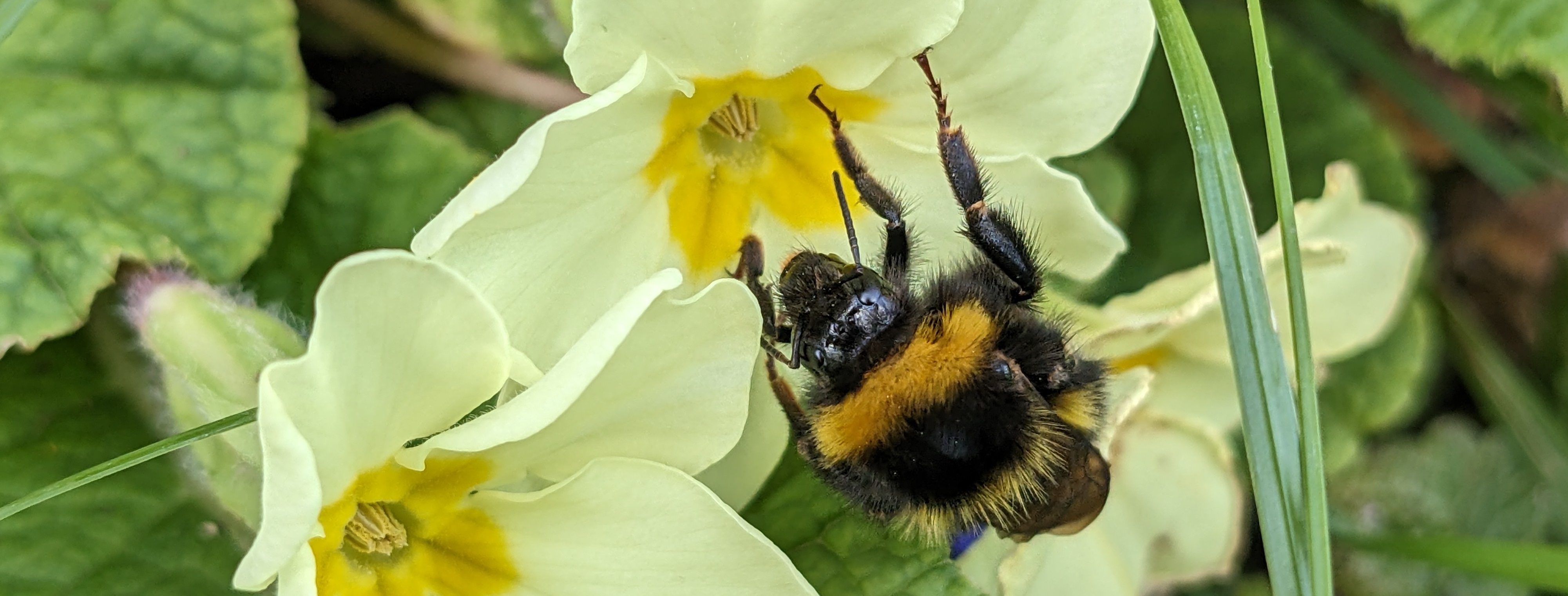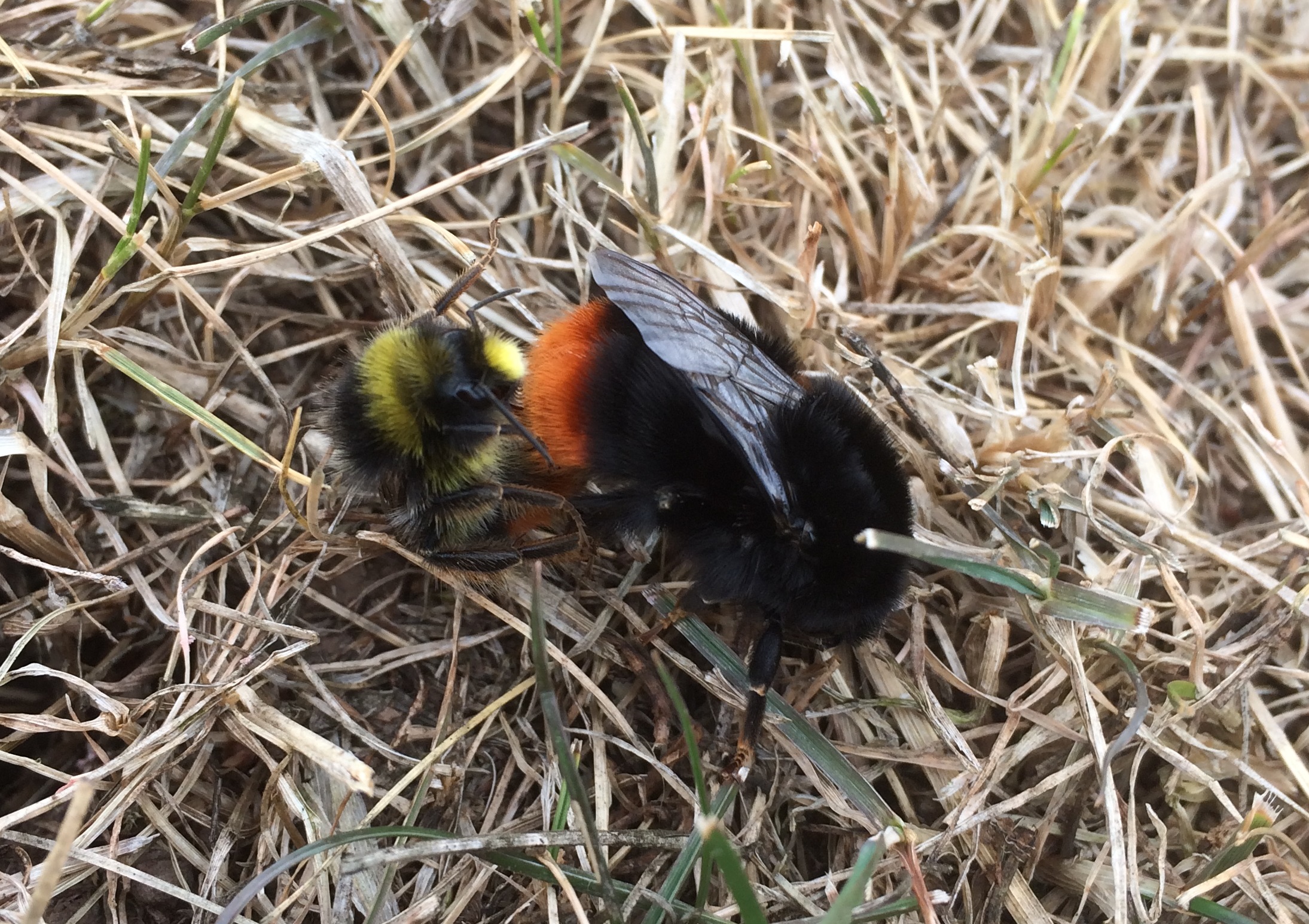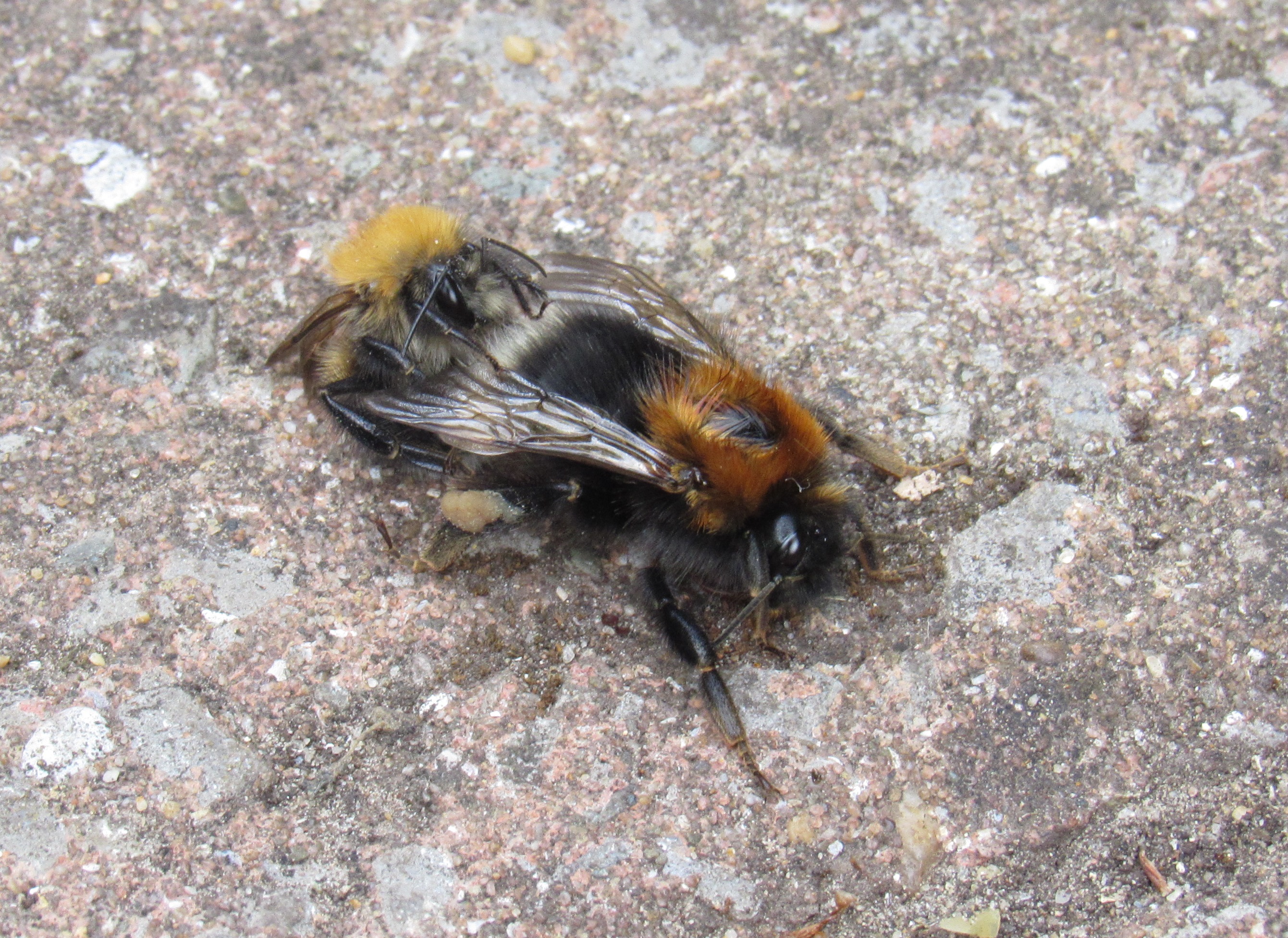
Bumblebee on primroses, March 2023 (photo: George Ashton)
BEES
No Bees on the BeeWalk!
By Liz Gibbs
10 September 2024
 Common Carder Bee on thistle in July 2018 (photo: Sue Ashton)
Common Carder Bee on thistle in July 2018 (photo: Sue Ashton)
Some of you may know that at the same time as I do the monthly ‘Plant List’ for the Community Woodland, I also do a BeeWalk for the Bumblebee Conservation Trust (see the Blog section of this website for my blog on Beewalking). For the past four months, I have returned the number of zero bumblebees seen on the walk, which is a dreadful result!
My walk is about 1.6 km long and takes in woodland, hedgerow, the Community Woodland and open ground, so opportunities, you would think, for plenty of bees, especially as we can offer them their very own bee banks at the Community Woodland. According to the results from the Bumblebee Conservation Trust, it was not only my results in June that were ‘challenging’!
Not surprisingly, much of this can be put down to the very wet spring this year which may have delayed colony formation. Wet weather prevents the queens going out foraging; instead, they spend more time incubating, and fewer workers are produced. In early March, I did see plenty of queens out looking for nest sites, but then the queen had to divide her time between incubating and foraging in between rain showers. She also needs to keep the nest temperature up to around 30 degrees Celsius – quite a feat! This year many more queens will have died than usual. As the eggs in a nest with a queen eventually develop and workers emerge, there should have been plenty of bees around in early May. They were in abundance in my garden, but not at the Woodland!
With a mild summer, things may improve, but so far this has not happened. I would have expected that later broods would have appeared by now. The results from last year showed a good year overall after a poor start, but based on my survey that looks unlikely this year.
It is therefore so much more important that we plant nectar and pollen rich plants in our gardens and elsewhere. We thought we had done just that at the Woodland, but clearly not sufficient or varied enough to tempt bees out of our gardens. Apart from being delightful creatures to watch, bumblebees pollinate many fruits and vegetables, including strawberries, raspberries, peas, beans and tomatoes. A decline in the number of pollinators could affect crop yields, a healthy environment and successful agriculture – which is bad news for all of us!
 Bumblebees on scabious at the Community Woodland in July 2019 (photo: Sue Ashton)
Bumblebees on scabious at the Community Woodland in July 2019 (photo: Sue Ashton)
To learn about BeeWalking, or counting bees for the Bumblebee Conservation Trust (BCT), click on this link to our blog by Liz Gibbs: http://northcurrywildlife.blogspot.com/2019/02/beewalking-not-like-dog-walking_47.html
For help with bumblebee identification, go to the helpful pages on the BCT site: https://www.bumblebeeconservation.org/identify-a-bumblebee
Bee Life Cycle By Liz Gibbs
In spring, the queen emerges from hibernation and starts her own colony. The female workers are produced and they begin foraging, feeding the larvae and looking after the queen. Later, the queen lays unfertilised eggs which are the males, and as they hatch they eat the stores of honey but don’t forage to replace it and generally have a good time! At this point, the queen may die or lose her influence so the males then emerge to mate with a new queen as she herself starts to fly.
This is Bombus lapidarius or the Red-tailed Bumblebee observed mating at the White Street cricket field. The queen is by far the larger and at first sight doesn’t look like the same species as the male with his fluffy yellow head and thorax. The whole business took about ten minutes.

Pair of Red-tailed Bumblebees mating (photo: Liz Gibbs)
Another pair of mating bumblebees are these Tree Bumblebees (Bombus hypnorum). Again, the female is much larger than the male.

Mating pair of Tree Bumblebees (photo: Sue Ashton)